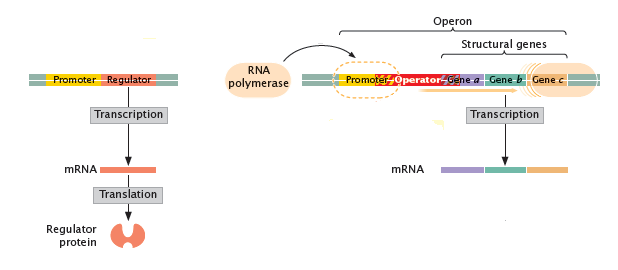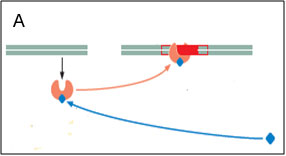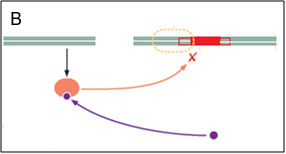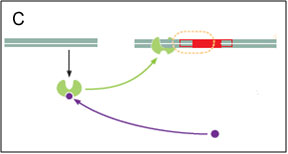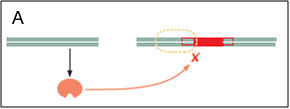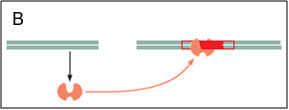Chapter 16 Online Worked Problem: Gene Expression in Bacteria
Problem Statement
A regulator gene produces a repressor in an inducible operon. A geneticist isolates several constitutive mutants affecting this operon. Where might mutations that cause the operon to be constitutively expressed occur? How would the mutations cause the operon to be constitutive?
For help with this problem:
- Review Section 16.2 on Operons control transcription in bacterial cells.
- Review Figures 16.3 through 16.12 and Table 16.2.
- Review the Worked Problem on page 456.
Question
Begin by thinking about the steps to take to do this problem. Use the dropdown menu to put the steps in the order in which they should be performed.
| Understand how the system is controlled. | |
| Identify relevant information provided that will enable you to answer the question. | |
| Identify the question being asked. | |
| Determine which proteins/DNAs are necessary for the process that have been destroyed by mutation. | |
| Define terms you may not know or understand. |
Step 1: Define terms you may not know or understand.
Question
1. What is an inducible operon?
| A. |
| B. |
| C. |
| D. |
Step 2: Identify the question being asked.
Question
What problem are you being asked to solve?
| A. |
| B. |
| C. |
| D. |
Step 3: Identify relevant information provided that will enable you to answer the question.
Question
Pick the correct answer:
| The operon in question is | |
| The geneticist isolated | |
| The mutants transcribed the operon |
Step 4: Understand how the system is controlled.
Question
1. How does a repressor block transcription of the operon?
| A. |
| B. |
| C. |
| D. |
Step 5: Determine which proteins/DNAs are necessary for the process that have been destroyed by mutation.
Question
1. What is the problem with transcription in a constitutive mutant?
| A. |
| B. |
| C. |
| D. |
Problem Statement
Question 1
A regulator gene produces a repressor in an inducible operon. A geneticist isolates several constitutive mutants affecting this operon. Where might mutations that cause the operon to be constitutively expressed occur? How would the mutations cause the operon to be constitutive?
Another option is a mutation in the operator DNA, as this is where the repressor normally binds to hide the promoter from RNA polymerase. With nothing to hide the promoter, RNA polymerase can initiate transcription over and over.
Final feedback: Some common errors and tips…
There are many components to keep track of in this type of complex question. You must understand the operon control system before you can even begin to think about the mutants. Making a diagram can really help you keep track of what is going on—where the repressor, inducer, and DNA components are, whether they are present or absent. Then once you are clear on how things work normally, look at what the mutants can no longer do correctly. The proteins/DNAs in that part of the process no longer function correctly, i.e., they are the ones that have been mutated.
Once you understand the system of control, you can also think of it in terms of whether the repressor is bound to the operator (no transcription) or whether the repressor is bound to inducer (transcription).
Then you can think of what mutations might cause transcription to occur non-stop. Thinking backwards along the path of “no transcription” on the right side, you can see that both the repressor and operator are involved. So making a mutant in either of those will affect the outcome (transcription).
